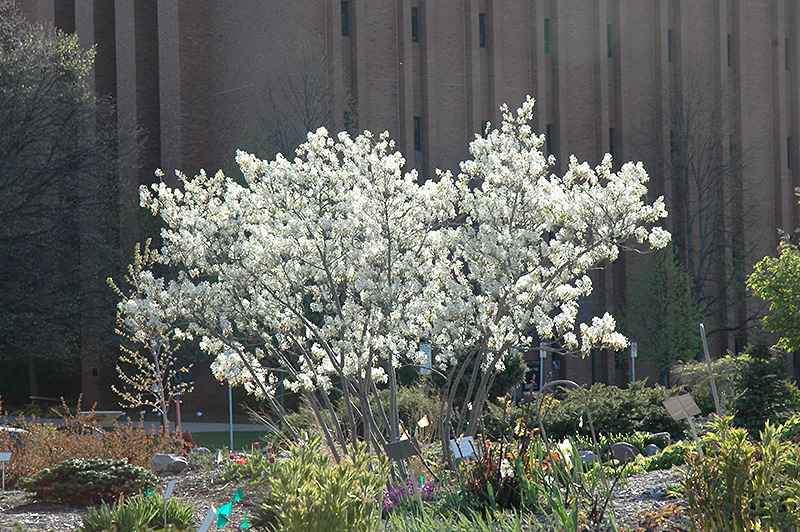Amelanchier is a genus of deciduous shrubs, which tolerates strong sunlight and shade. They require little pruning or shaping due to their growth habits as an upright but rounded bush.
Amelanchier has some of the most brilliant autumn foliage colours in shades from deep reds to dazzling gold-oranges depending on soil type.
Amelanchier is also known as the shadblow tree because it provides fruit late enough in winter that deer will not eat them before birds can, while still providing food through early spring when many other plants have been eaten by animals during hard winters.
They grow best with light and bright conditions but still grow well in shade. Most importantly, they need space at planting time so they don’t outgrow their position. This is when they require pruning, but otherwise, should be left alone.
Amelanchier is also known by several common names:
- Serviceberry
- Juneberry
- Snowy Mespilus
- Shadbush

When & How to Prune
There are four species of Amelanchier that flower: A. laevis, A. lamarckii, A. grandiflorus and A. stolonifera. In the late winter it is best to only prune diseased or untidy branches on these plants because any major surgery stunts future flower growth in springtime – but if they need corrective pruning after they’ve flowered, then do this immediately afterwards while there’s still time for them to grow more flowers before next year.
When pruning Amelanchier, it is best to avoid cutting the tree too hard. Doing so will inhibit flowering in future years; however, late pruning normally brings better autumn foliage colour with new leaves growing back on trees that have been cut down low enough.
Cutting Amelanchier Back Hard
As with many plants, Amelanchier’s can be rejuvenated by cutting back hard at the start of their growing season. They will soon shoot out from the pruned branches and it’s important to remember that as with all hard pruning, the plant will grow back to its original size again because they have a root system which supports rapid growth.
Hard pruning is not advised for single stem small tree types due to how quickly they will become overgrown.